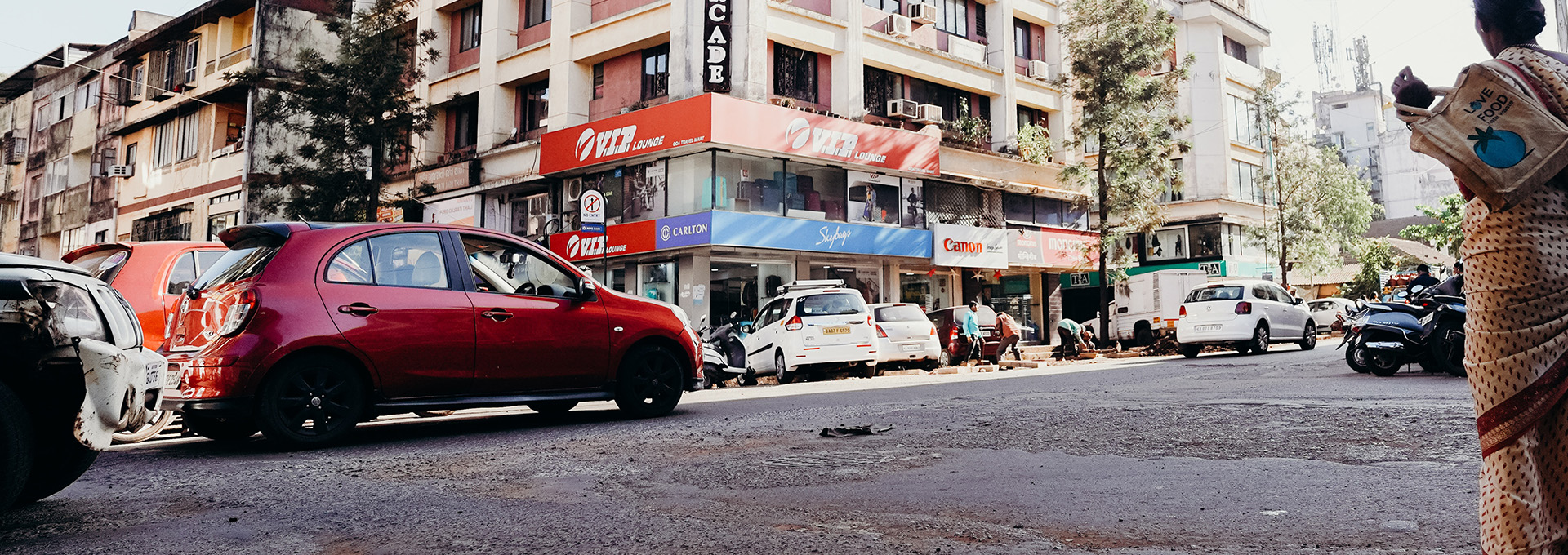During what became an around-the-world lecture tour in 2000, in conjunction with the presentation of my third paper at FISITA 2000 in Seoul, Korea (made possible by a deeply appreciated grant from the SAE Foundation) I stopped for a week (of meetings, research and a lecture to the members of the Northern India Section of SAE) in New Delhi, India. One of the attendees was kind enough to send me the following eMail message.
“August 4, 2000
Dear Al,
It was nice to meet you on July 1, 2000 at Hotel Bristol, Gurgaon, and I agree with your study and conclusions after hearing you on that day. Based on your guidance, I downloaded the paper from the French automobile engineers’ association site (www.sia.fr) and went through it with interest.
But, when I think about Indian traffic scenario, does it yield to your analysis done for Europe, USA and Canada? Specially when the traffic here is quite unruly and a large number of accidents are of the nature where the vehicles (only) get damaged. Have (you) given some thought to it after experiencing it here(?).
With best regards”
This was most fortunate as it forced me to review the experience, and my notes, while memory was still fresh to generate my Impressions of India.
I am absolutely delighted that you have not only taken the time to read the entire paper but also to write me! That delight is only enhanced by the possibility that you will have the time and inclination to continue the dialogue… at least sporadically.
My first impression of Indian traffic (from the passenger side only-I didn’t think I wanted to learn both left-side driving and the Indian driving customs at the same time) was fully in keeping with the implied answer to your question. That is, after hearing the cacophony of horn-blowing and seeing the complex mix of vehicle categories (from animal-powered – including humans – to Marutis and Mercedes) and the wide range of speeds (both overall and within categories, e.g. single person bike down to two-passenger bicycle-rickshaw) I immediately thought, “They don’t need me here. No one could possibly think of something else while driving in such a visual and auditory pandemonium!”
First impressions have seldom been so wrong.
Already within a few hours of Delhi traffic I was able to observe, both in my drivers (very capable all) and in the actions of other “vehicles” (quotes are there to include pedestrians), clear signs of what I have come to call the “Absent Minded Professor Syndrome” or AMPS. The fundamental cause of all accidents, in the home, the workplace or in vehicles is mental distraction – the mind is not on the motion.
From both my earlier analysis of data from countries around the world and now my direct observations during what became an around-the-globe lecture tour, AMPS infects us all. Indeed, I believe it to be part and parcel of the human genome. As I said in the Seoul paper, the “…human brain is immensely more powerful than any (computer) yet conceived. It has unfortunately one major ‘bug’. (And the DEDI has shown that this ‘bug’ is part of the basic operating system no matter the language used, the country of manufacture or, least of all , the colour of the machine.) When presented with a low-power task, it will drift away to more entertaining/profitable subjects.”
AMPS is most prevalent, and thus the danger greatest, in routine traffic flow on familiar roads. It seems that a direct connection is somehow established from the visual cortex to the spinal cord so that the signal doesn’t have to pass through the conscious mind . The hands and feet ‘automatically’, as though on autopilot in an aircraft, adjust the vehicle’s progress to the ebb and flow of traffic, including automatically reacting to traffic lights (Well, most of the time anyway.). The mind itself is, as the French say, “Dans la lune.”
Thus what I initially saw as ‘pandemonium’ is perfectly normal and routine to the experienced Delhi driver, including having any half-vehicle space in front of his vehicle immediately filled with a half-vehicle … and with the driver expecting him to make room for the other half. Moreover, it soon became clear that the drivers were divided into the usual two groups found in every city: 25 to 40% actively seeking every opportunity to get to their destination faster (including, of course, almost all the taxi drivers!) and the rest mindlessly following the car in front of them.
I made a special effort to spend a couple of hours being driven on the Indian expressways (National 1 to the north and National 8 south beyond Gurgaon before the lecture). In spite of the vast differences in traffic and infrastructure, compared with Europe and North America, the record of ‘near-misses’ (i.e. the tire-skid marks, mentioned in the discussion after my lecture) shows exactly the same pattern as I have now seen also in Korea, Japan and Australia. That pattern can only be explained by the AMP Syndrome. (This research will form a large part of my next paper.)
Your first question triggered my first impression of Indian traffic, and also my second impression (i.e. that my first impression was wrong!). I find it very interesting that your other comment about the “… large number of accidents (in which only) the vehicles get damaged.” relates directly to my third, and deeply alarming, thought: “India, indeed every developing nation, stands before a virtual ‘Valley of Death’.”
The predominance of ‘fender-benders’ in which relatively few people are killed is due, of course, to the very low average speeds caused by the general congestion and the preponderance of very low speed ‘vehicles’ on Indian streets and expressways. The prosperity which, wherever war can be avoided, is on its way for all citizens of ‘the Third World’ will come through better roadway infrastructure and faster vehicles. The better infrastructure may reduce the accident rate slightly (although higher traffic volumes will mean a higher absolute number of accidents) but the higher speeds mean that the fatality rate is going to increase HUGELY.
The general speed limits used erroneously by most ‘developed’ countries will only make matters worse. The only solution is for governments to mount a massive public education campaign to warn their citizens about the fundamental cause of all accidents, the AMP Syndrome, starting immediately with every driver training program.
I am hoping that you can agree with my response to your comments. Whether or not you can immediately agree I would very much appreciate it if you would discuss AMPS with your friends and colleagues to find out if my observations are validated or contradicted by their personal experience.



